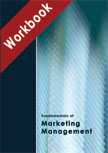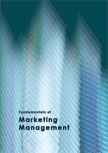Unilever in India - Rural Marketing Initiatives




|
|
ICMR HOME | Case Studies Collection
Case Details:
Case Code : MKTA008
Case Length : 17 Pages
Period : 1998-2004
Pub Date : 2004
Teaching Note :Not Available
Organization : Unilever, Hindustan Lever Limited
Industry : Fast Moving Consumer Goods
Countries : India
To download Unilever in India - Rural Marketing Initiatives case study
(Case Code: MKTA008) click on the button below, and select the case from the list of available cases:

Price:
For delivery in electronic format: Rs. 500;
For delivery through courier (within India): Rs. 500 + Rs. 25 for Shipping & Handling Charges
» Marketing Case Studies Collection
» Marketing Communications Short Case Studies
» View Detailed Pricing Info
» How To Order This Case
» Business Case Studies
» Case Studies by Area
» Case Studies by Industry
» Case Studies by Company
Please note:
This case study was compiled from published sources, and is intended to be used as a basis for class discussion. It is not intended to illustrate either effective or ineffective handling of a management situation. Nor is it a primary information source.
|
|
<< Previous
Introduction Contd...
|
Servicing rural markets involved ensuring availability of products through a sound distribution network, overcoming prevalent attitudes and habits of rural customers and creating brand awareness. Price-sensitivity was another key issue.
Rural income levels were largely dependent on the vagaries of monsoon, and demand was not easy to predict. Thanks to TV, consumer awareness in rural areas had increased.
Rural expenditures on Fast Moving Consumer Goods (FMCG) were growing at an impressive rate of 20 -25%.5 Several companies were taking rural marketing seriously, one of them being Hindustan Lever Ltd (HLL), Unilever's Indian subsidiary.
|
|
In 2004, HLL was India's largest FMCG company, with 30 power brands (Exhibit: I), turnover of over Rs. 10,000 crores and 40,000 employees. HLL derived around 50% of its sales from rural areas. HLL's rural marketing initiatives began way back in 1988, when the company had launched 'Wheel' for the rural and lower income urban consumer.
These efforts had intensified since the late 1990s when HLL like many other companies faced flat growth in the urban markets. In early 2004, as it reviewed its past performance, HLL realized that bulk of its future growth was likely to come from rural areas. The challenge for HLL was to exploit this opportunity in a profitable manner.
|
|
Background Note
HLL's history could be traced back to 1885 when the Lever Brothers set up "William Hesketh Lever", in England. In 1888, the company entered India by exporting 'Sunlight', its laundry soap. In 1895, the Lifebuoy soap was launched in India followed by 'Pears' in 1902, 'Lux' flakes in 1905 and 'Vim' scouring powder in1913. In 1930, the company merged with 'Margarine Unie' (a Netherlands based company which exported vanaspati to India), to form Unilever. In 1931, Unilever set up it first Indian subsidiary, the Hindustan Vanaspati Manufacturing Company for production of vanaspati... |
Excerpts >>
|
|



